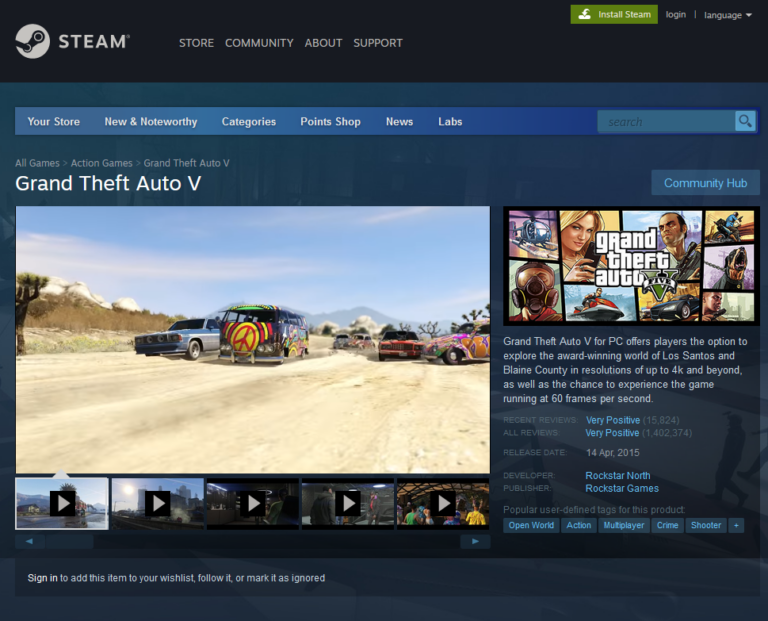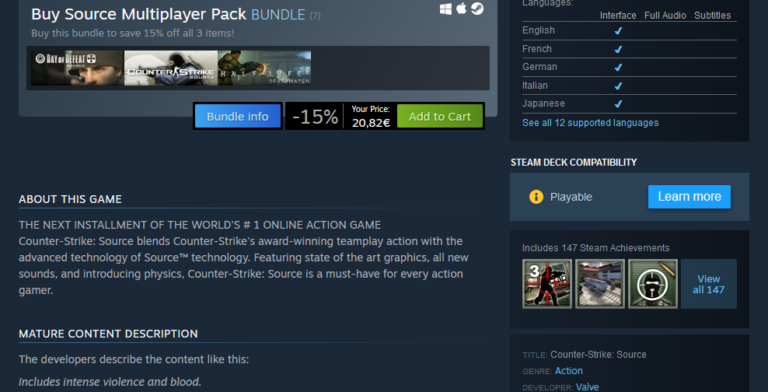The power of change... to your storepage
- May 1, 2023
- 2:26 pm
Making changes to your store page. For some an exciting challenge for others a chore they are not eager to invest too much time in. You could think it’s good enough, nothing is perfect anyway, and call it a day. But is doing so leaving sales on the table?
We dove into Steam store pages, to find out how much publishers change them and if that relates to being successful on the platform.
Steam Data Suite has dashboards dedicated to store page optimization. It automatically tracks your changes and reports the performance impact. Even retroactively! Check it out here.

The shocking numbers
Looking at store pages for games released after 2020 and found that many assets are never changed.
- 70% never changed their screenshots
- 64% never changed their videos
- 60% never changed their descriptions
We also looked at difference in number of store page changes between successful games (top 5% in revenue) and the rest. This showed that successful games make nearly twice as many storepage changes. This connection can be simply because these companies simply have more time/budget for marketing therefore a better chance at success, or maybe changing your store page can help you get more success.
The top 5 vs the rest;
- 5.5x as many videos changes
- 2.2x as many discounts
- 2.5x as many changes to tags
- 25% more changes to screenshots
- 65% more changes to descriptions
The change

Obviously, we’re not just talking about changing just anything. Assuming all changes are expected to be in improvement and help the game sell better, we could call the practice of making changes optimization. There’s a few good reasons to optimize your store page on Steam.
First of all, your store page, no matter how good, can be better. The only way to find out how to make it better is to experiment. A-B testing your store page is one way, but on Steam that’s not possible, and you would instead do sequential testing. This means as much as making a change, and seeing if it makes your store page more effective. This is measured in conversion rate to sales and conversion rate to wishlists; the share of the people visiting your store page that actually convert.
Every change has the potential of increasing the effectiveness of your store page, and with that your sales. Forever! Make a change every few weeks, and you are bound to find out what works best for your audience and your game. What would it mean for your bottom line if you would have 1% better conversion rate to Steam? We see the uplift is often greater than that, once you embrace an optimization workflow.
Also, what is a near-perfect store page today will probably not be great in 2 years. Maybe then everybody is doing that one thing that made you stand out, making it lose it’s power. Maybe there’s new functionality that can help you build the perfect store page, and tell the story of your game to passers by.
So why doesn't everybody optimize all the time?
In many cases developers are devoted to their game, and setting up a store page is a one time affair. This happens a lot with indies in particular. It makes sense to focus on the product, but for commercial success it’s equally important to find the right product proposition. Experimenting with the store page can give you insights into the best way to position the game. Focus on the theme or the gameplay? The competitiveness or the storyline? Who knows, these things can even end up help make product decisions!
Secondly, since not all distribution platforms make it easy to change store pages, why only do it for Steam? Steam is quite unique in how easy it is to change store page assets like descriptions, images and videos. Interestingly enough, maybe you can use the Steam store as a testing grounds for what eventually will also be your PlayStation, Switch or Xbox store page. With some exceptions, generally a better store page is a better store page.
Thirdly, we know the release is the most important point in time; it’s when your game’s success is established. This makes how your store page converts at release crucial. But what if I tell you we see that our clients generally get less than 1% of their lifetime traffic around the release. That leaves the other 99% ready to face an optimized store page. Besides, you can already begin optimizing before releasing. For unreleased games focusing on the wishlist conversion rate is a good way to increase wishlists, but will also improve the sales conversion once the game is out. It makes sense this rubs off; you made your store page better at ‘selling’ your game!
Next, it’s a misconception that a dynamic store page is something for Games as a Service(Gaas) only. Sure these type of games rely more on community interaction, and their changing content requires a changing store page to keep up. While a GaaS game is mainly trying to involve their audience to build the game, it’s easier to use your audience to help build the store page. Look at their behaviour, make changes, and learn.
Lastly, you could think; it’s not going to be perfect anyway, good is good enough. Maybe you asked around, looked at some competitors and feel confident that what you have is on par. Then consider that it’s not about being perfect. It’s about improving commercial results from your efforts. If your store page is average, within the whole of Steam, where let’s be honest the bar isn’t very high, that’s still not great. It could mean that your average store page can quite easily improve it’s conversion rates.
Conclusion
It’s understandable why so many store pages see little to no changes, but if you’re not utilizing your visitors to figure out how to improve, you’re likely leaving money on the table. Yes, it can take some time and work, but at the end of the day your lifting up your entire long tail sales. Isn’t that worth something?